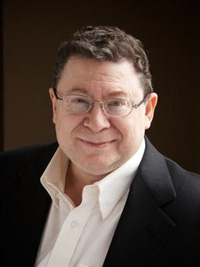
Constructivism: An expert's view
Harvey Friedman is a Distinguished University Professor of Mathematics, Philosophy, and Computer Science Emeritus at Ohio State University. He is famous for his ground-breaking work on the foundations of mathematics. Here he gives us a brief introduction to a school of thought called constructivism.
What is constructivism and why do we need it?
Maths does funny things to your brain.

Harvey Friedman
Suppose you have an infinite sequence consisting entirely of 0s and 1s. In other words, the values of the infinite sequence are 0s and 1s. There may or may not be any 0s and there may or may not be any 1s.
But is there a maximum value of the sequence?
Yes, says the mathematician, certainly so. Because if there is any 1 there at all, the maximum value is surely 1. Otherwise it is all 0s, and the maximum value is 0.
But this is a very strange situation because this line of reasoning gives no way at all of finding out what the maximum value really is. If the sequence has length, say, 100, you can easily find out the maximum value by just looking it over. But this is a sequence of infinite length and there is no looking over an infinite sequence.
Unless you are a classical mathematician. You pretend that you can look it all over in one "glance" in your mathematical brain.
So when confronted with this conundrum, in your bewildered unsatisfied state, you really have only three choices.
- Accept that this is the way mathematics works, continue with your maths and just get over it and live with it and move on and get to think like a mathematician.
- Decide maths is not for you, and have nothing to do with any more theoretical maths.
- Do something about it. This normally means that you stick with maths and become a constructivist.
Generally speaking, the constructivist sets a higher standard for mathematical proofs. for example, in order to prove that something exists, you are obligated to give an example. The example can be a description that depends on some previously given mathematical data that you are working with. It's a bit involved to understand just what is allowed and what is not. But this has been analysed very successfully going back to LEJ Brouwer and Arend Heyting and Errett Bishop.
How does constructivism affect classical mathematics?
Constructivity is not by any means only a negative activity, one of simply objecting to business as usual. Errett Bishop was a master at pointing at what he considered as such "flaws" in ordinary "classical" mathematics and reworking the material constructively, removing the flaws. The statements are imaginatively altered. Generally speaking, there is a more subtle and illuminating treatment of the original "flawed" material, with new interesting ideas.
Nevertheless, there are a number of very important places in mathematics where the proofs are clearly non-constructive, and the really desired constructive version is nowhere in sight, and where obtaining it is considered a major open problem of great interest, even by mathematicians who are not constructivists.
I mention two examples of this: Roth's theorem and Falting's theorem. These were formerly famous conjectures by famous mathematicians. (Roth's theorem proved a conjecture of Siegel, and Falting's theorem proved a conjecture of Mordell.)
Both assert that certain equations or inequalities in one or more unknowns have at most finitely many solutions. The constructivist wants to have a procedure for being able to list these solutions. No one has any idea how to do this for Roth's theorem and Falting's theorem.
The situation is not quite as unsettling as it could be. An upper estimate on the number of solutions for both theorems is known, but finding the solutions is presently beyond our reach. We can formulate this as an issue in constructivity. For both theorems, we have a proof that there exists a whole number such that all of the solutions to the given equation or inequality can be expressed with fewer than that many digits. But we have no constructive proof of the existence of this whole number.
How does constructivism affect mathematics done for practical purposes?
The working mathematician, who does not work in logic and the foundations of mathematics, generally takes a rather pragmatic approach to constructivism: he or she fixes on computational end products that make sense independently of any philosophy or logical systems.
The approach generally involves actually computing down-to-earth examples of or approximations to theoretical mathematical objects. This is basically a practical finitistic attitude that is more radical than constructivism. However, generally speaking, in order to analyse a mathematical theorem in computer ready terms, one has to essentially analyse the theorem from what amounts to the constructivist point of view — and then go on from there.
About the author
Harvey Friedman is a Distinguished University Professor of Mathematics, Philosophy, and Computer Science Emeritus at The Ohio State University and is best-known for his work on the foundations of mathematics. He is also a classical pianist. You can find out more about his work in this Plus article (from 2011), on Friedman's YouTube channel or in this Nautilus article.
Look out for more on Friedman's work in a future Plus article.